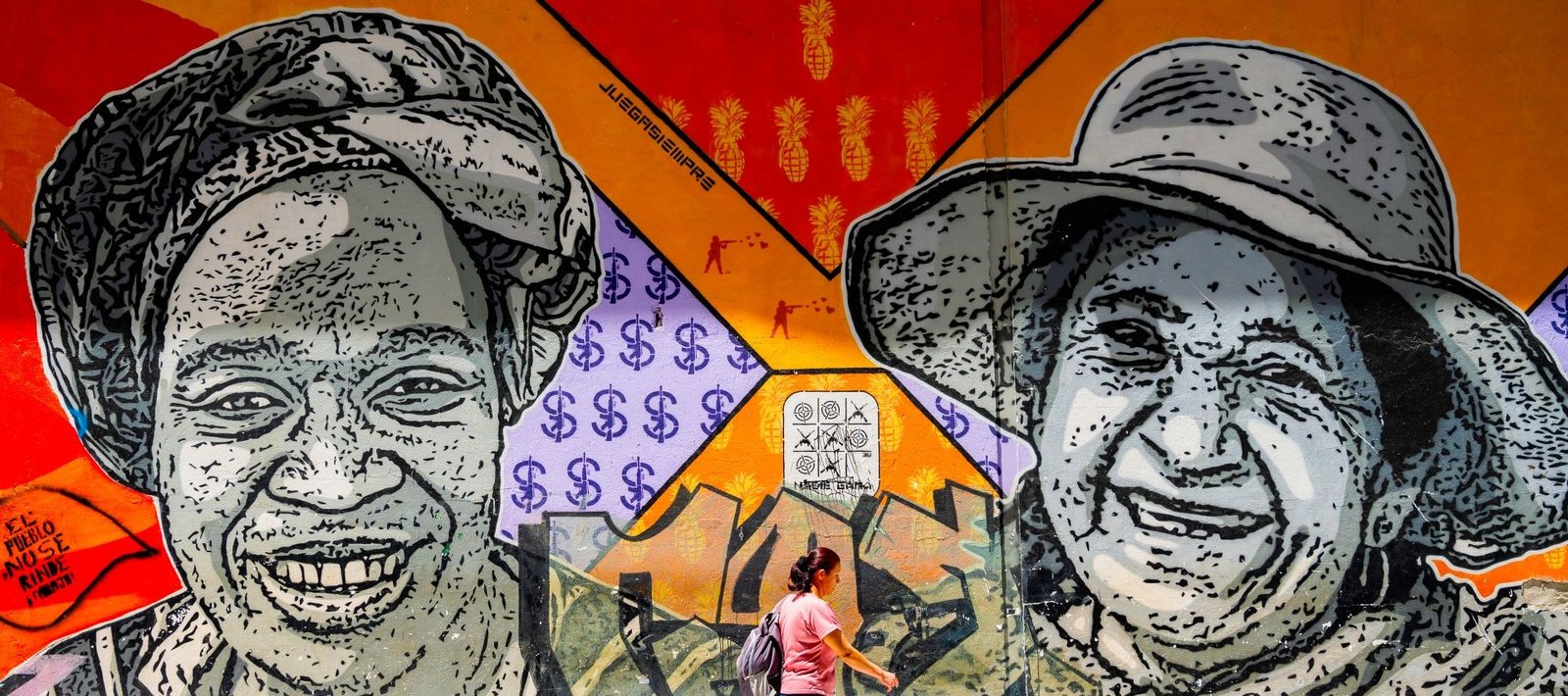
Bogotá, grafiti city
In Bogota the walls talk, shout, condemn, cry, captivate, and provoke both laughter and tears.
They relate day-to-day occurrences; they recapitulate, elucidate, satirize, and expose reality.
By: Margarita de los Ríos
Photos: Margarita Navas
Like a blank piece of paper, blank walls beg to be filled with stories. They lament social injustice, denounce corrupt politicians, and bring readers up to date on current gossip. This is nothing new. The walls of the Altamira caves reveal the cosmogony of our ancestors, and according to historians, the walls of Pompell were crowded with inscriptions that reflected daily life.

Graffiti as we know it was born in 1970s New York as part of hip-hop culture. It was considered the third element of this cultural movement, after music and dance.
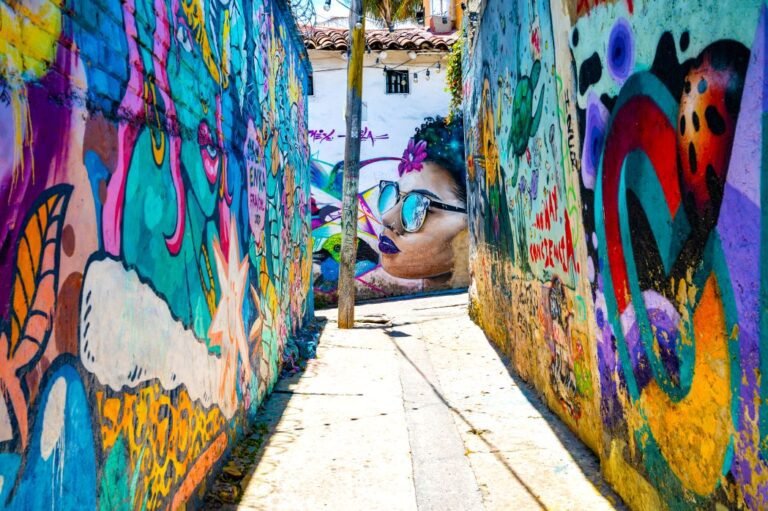
It did not take graffiti long to reach Colombia, which was experiencing great social upheaval at the time. Inspired by the May 1968 student protests, art students at the National University used graffiti to create real conversations with pedestrians. By the 1980s, the graffiti movement had become so powerful that noted semiologist Armando Silva published the first study on graffiti in Bogotá, The Imagined City.
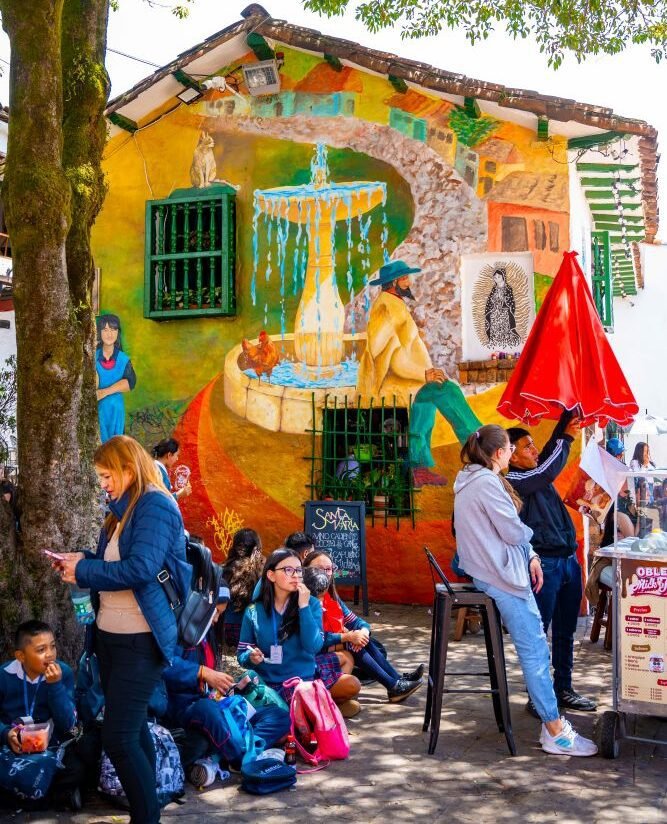
The active countercultural movement, very appropiate of Bogota, contributing to the practice of the graffiti to expand like dust.
The city’s graffiti scene evolved in a way that made Bogota one of the world’s top ten cities for the art. From its unconventional origins and questionable legality, graffiti morphed into a lifestyle for a growing group of artists. What is special about this city? Graffiti is legal in Bogotá, certain walls are designated for writing, and graffiti even plays a significant role in important festivals.
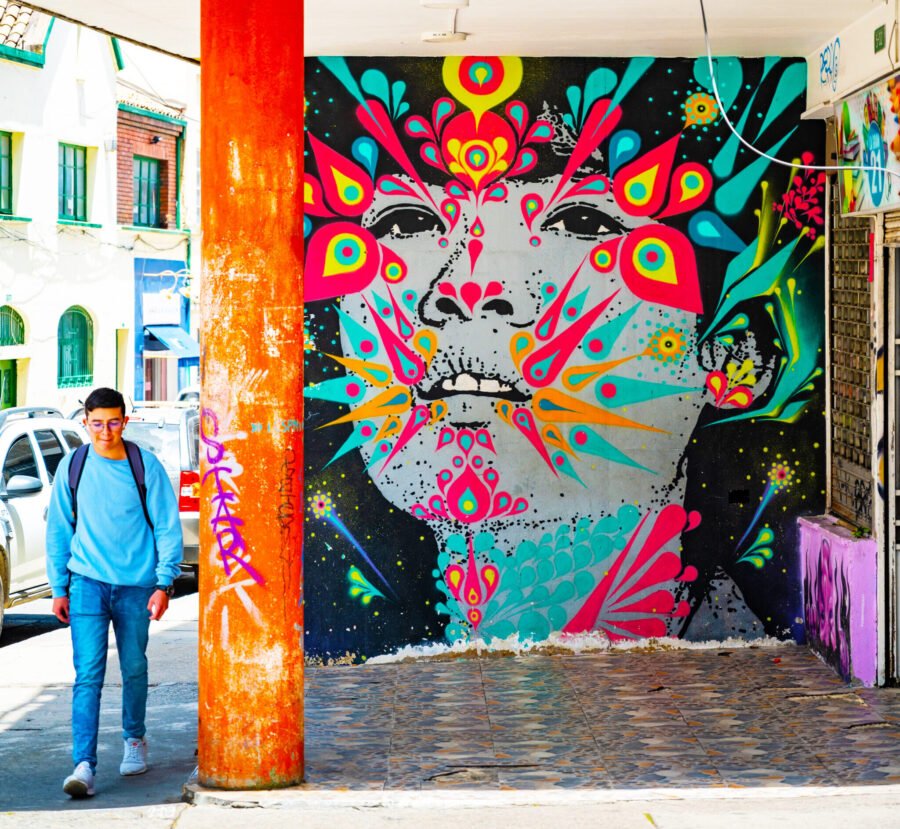
Vital part of the city
Since 1998, when mayor Antanas Mockus oversaw the so-called “Bogotá miracle,” the use of public space in the city has come into its own. New York artists like Beso, Esoh, How, Nosm, and Alfa contributed artwork to the streets of Bogotá, and the first forum specializing in graffiti, Escritores Urbanos (Writers United), was created. In 2005, the first graffiti festival-conference took place in Usme, bringing together more than 40 people who painted a wall under the guidance of the graffiti group Mientras Duermen (While You Were Sleeping).

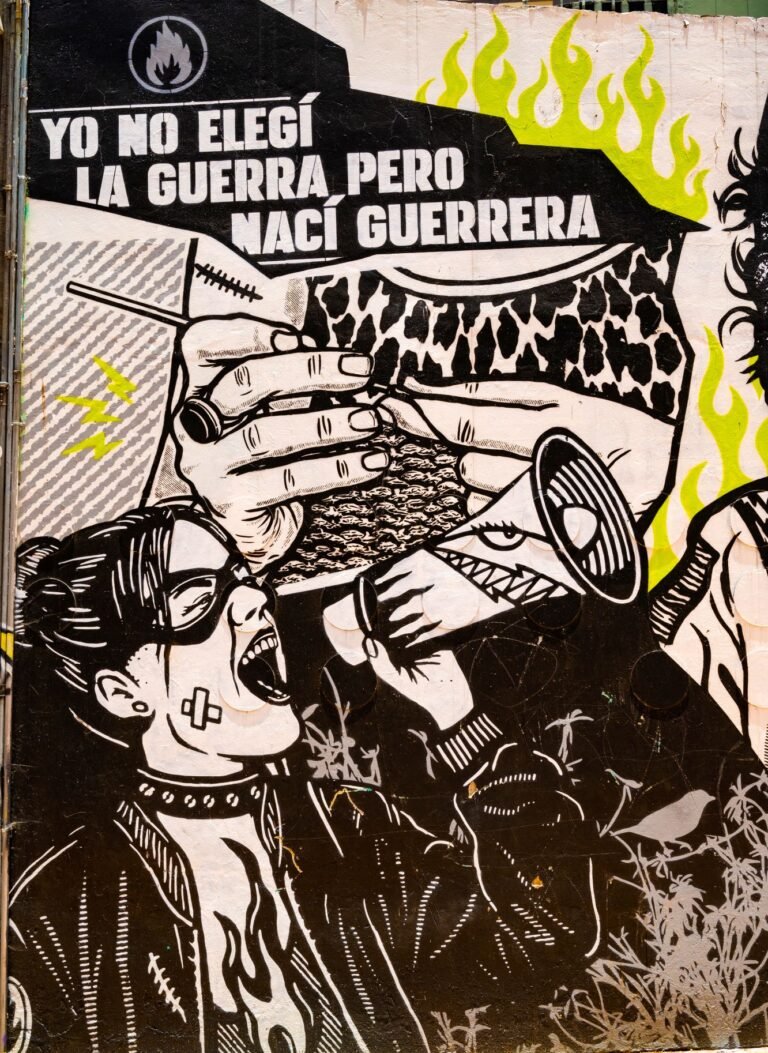
A special movement
The active counterculture movement – very much identified with Bogotá- helped the practice of graffiti spread like wildfire. Ironically, so did the construction of the Transmilenio (rapid bus network) system in 2007. In order to lay out the large avenues that were needed, hundreds of buildings were demolished, leaving miles of enormous uniform blank walls, providing a unique opportunity for spray paint artists. Carrera 30, between Calle 74 and Calle 76, brought to life the Muros Libres (Free Walls) project, led by the Mefisto collective.
Graffiti became an unstoppable force in Bogotá, but the murder of Diego Felipe Becerra, a young graffiti artist killed by the police in 2011, led to a change in policy and inspired a new generation of urban artists who used this art as a tool of denunciation and remembrance. Enacted in 2013, Decree 75 regulated graffiti in the city, recognizing its artistic and social value. Starting in 2016, every August 31st has been celebrated as Urban Art Day in honor of Diego Felipe Becerra. The most recent Urban Art Day attracted more than 80 participating artists. What is more, last year the Ministry of Culture, Recreation, and Sports (SCRD) launched an Urban Art Day Scholarship.
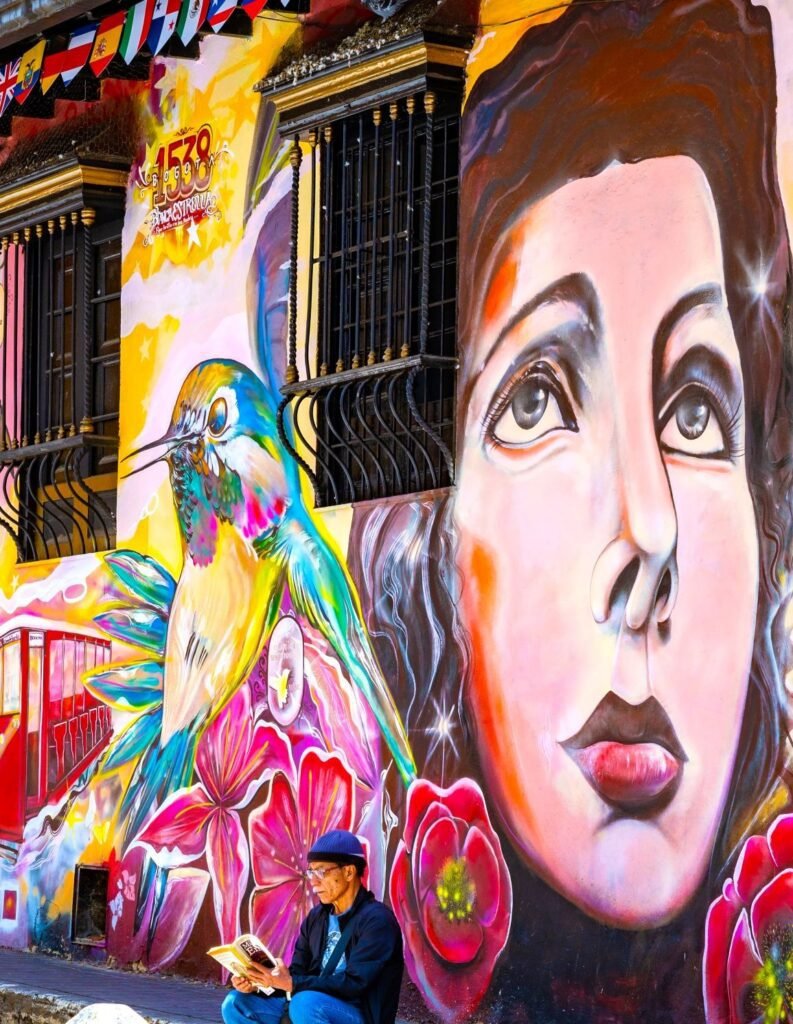
Nowadays, many graffiti artists work in advertising, art, design, architecture, and fashion. Publications serve fans, new materials are imported or created, textiles with graffiti designs are popular, and graffiti is lauded as a cultural phenomenon. More than 90 artists came together to paint the bus stations, and another 200 people participated in beautifying Avenida 26.
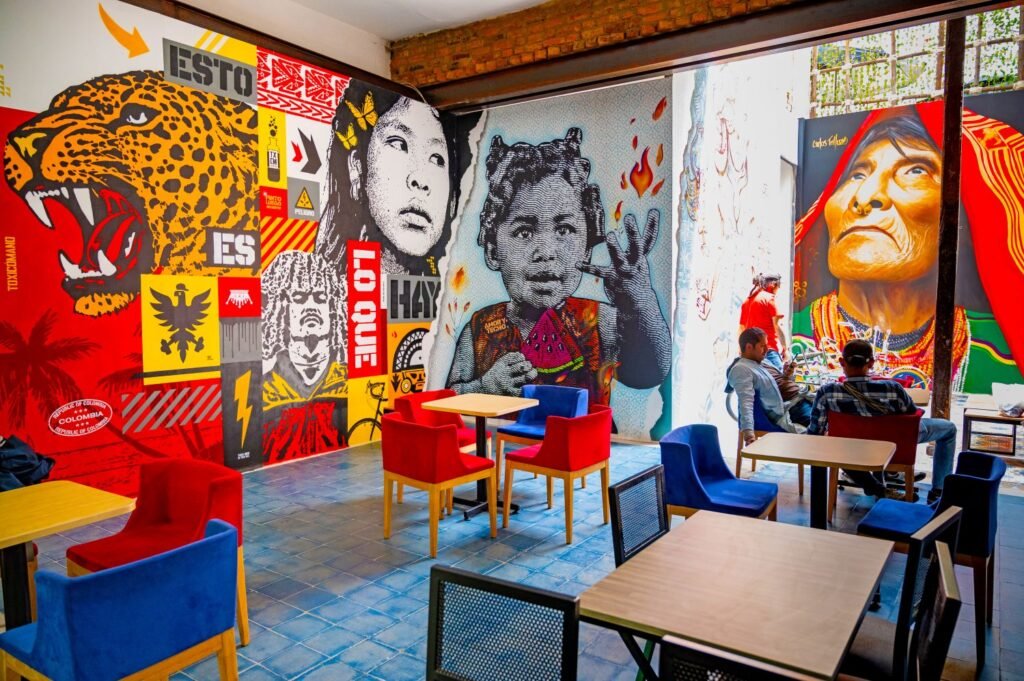
The city recognizes and respects male graffiti artists like Dwel, Toxicómano, Zas o Fco, Stinck Fish, SakoAsko, Score999, Guache, Djlu, and Lesivo and women artists like Erre and the group of female conflict victims known as Aletea. Instead of persecuting them, owners of sites with extensive walls in the target areas hire these artists to beautify their façades.
The students of the Facultad de Artes of the Universidad Nacional drew the image walls, word games, and satirical contents that made dialogues in the town.
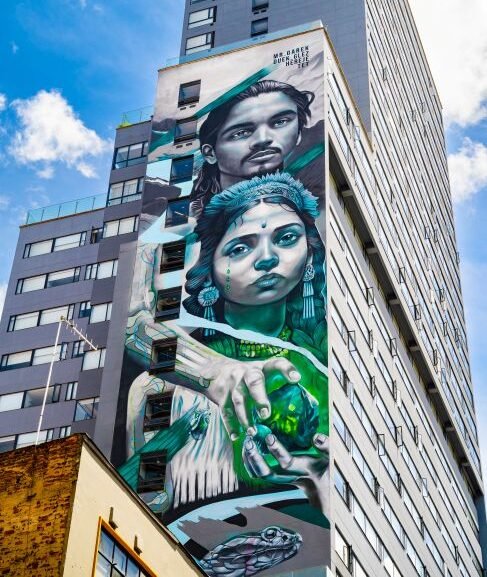
Places to see graffiti
- Distrito Grafiti / Cra. 53f n.°5c-1 5C-99
- Distritos La Candelaria y Santa Fé
- Avenida El Dorado de Carrera 30 a Carrera 5
- Av. Jiménez entre Cra.10 y Av. Caracas.
- Avenida NQS entre calles 80 y 68
- Autopista Sur entre los barrios La Alquería y Venecia
Book the tour
- Bogota Grafiti Tour: +57 321 2974075
- Capital Grafiti tours: +57 320 5741140




Leave a Reply